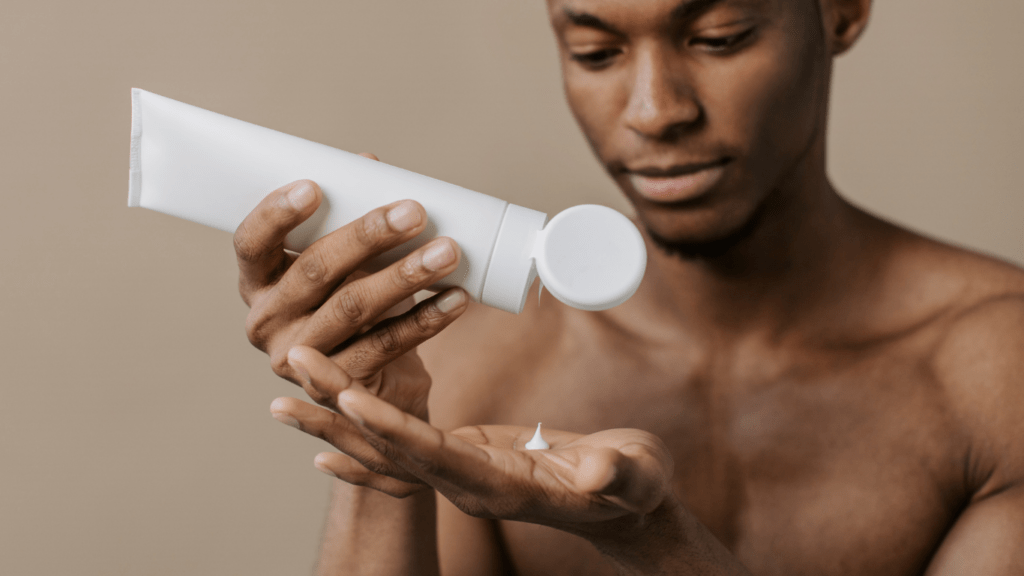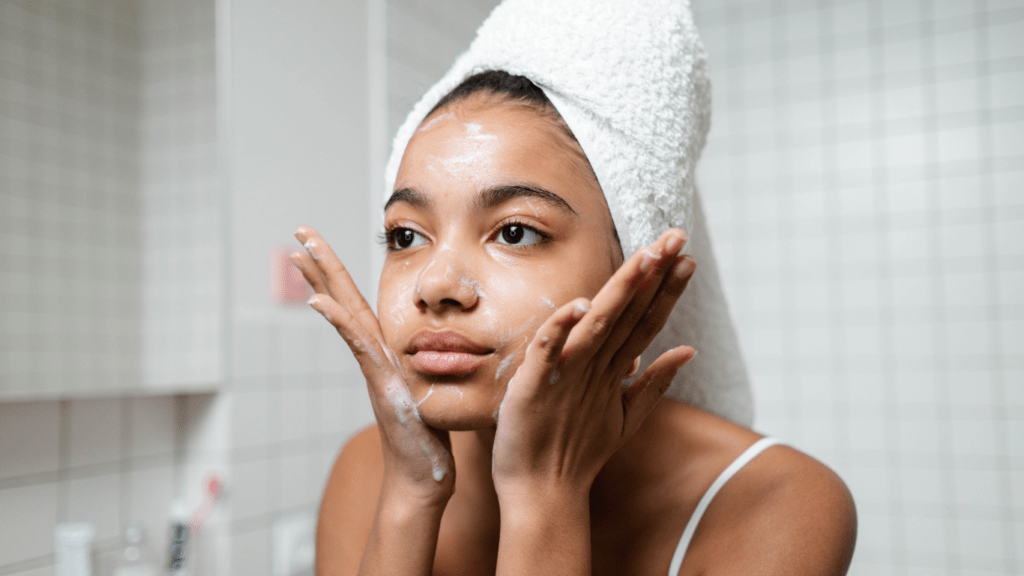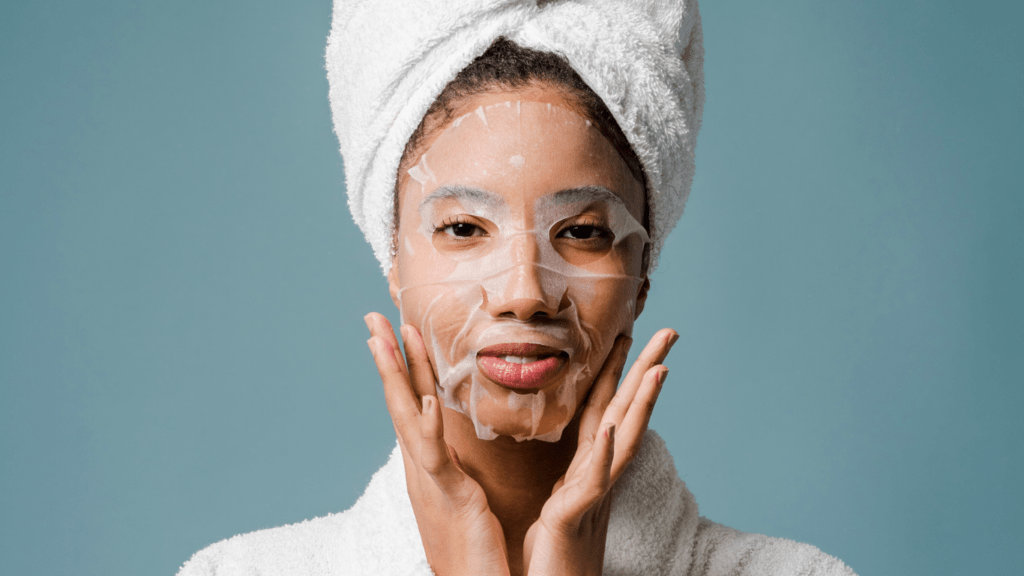Understanding Exfoliation
Exfoliation is a key aspect of maintaining healthy skin. It involves removing dead skin cells to reveal a smoother, more radiant complexion.
What Is Exfoliation?
Exfoliation is the process of removing dead skin cells from the skin’s surface. Cells naturally shed, but sometimes they require assistance to slough off, which is where exfoliation comes into play.
There are two main types: physical and chemical. Physical exfoliants include scrubs with granular substances like sugar or salt. Chemical exfoliants utilize acids such as alpha hydroxy acids (AHAs) and beta hydroxy acids (BHAs) to dissolve dead cells.
Benefits Of Exfoliation
Exfoliation offers several notable benefits. It improves skin texture by removing rough, flaky patches. This allows for smoother application of skincare products, enhancing their effectiveness. Exfoliating also helps in reducing clogged pores, which can lead to fewer breakouts and blackheads. Regular exfoliation can even out skin tone by minimizing hyperpigmentation and acne scars. Additionally, it promotes cellular turnover, resulting in a fresher, more youthful appearance.
The Dos of Exfoliating
Exfoliating brings significant benefits if done correctly. Follow these dos to make the most out of your exfoliation routine and ensure your skin stays healthy and glowing.
Choosing The Right Exfoliator
Choose the right exfoliator based on your skin type and needs. For dry or sensitive skin, opt for chemical exfoliants with AHAs like glycolic acid. For oily or acne-prone skin, BHAs like salicylic acid work best. Physical exfoliants, like scrubs with fine granules, suit those with normal skin. Always patch-test new products to avoid adverse reactions.
Proper Exfoliation Techniques
Use proper exfoliation techniques to avoid damaging your skin. Apply your exfoliant gently, avoiding vigorous scrubbing. When using a chemical exfoliant, follow the product’s instructions carefully, leaving it on for the recommended time. For physical exfoliants, use circular motions and light pressure. Limit exfoliation to 2-3 times a week to prevent over-exfoliation and irritation.
Knowing Your Skin Type
Know your skin type to tailor your exfoliation routine. Identify whether your skin is dry, oily, combination, or sensitive. For dry skin, focus on hydration and use milder exfoliants. Oily skin benefits from stronger exfoliants that help control sebum production. Combination skin requires balancing between hydrating dry areas and treating oily zones. Sensitive skin needs the gentlest approach with minimal frequency.
Hydrating And Moisturizing After Exfoliation
Hydrate and moisturize after exfoliation to soothe and protect your skin. Immediately after exfoliating, apply a hydrating toner or essence to replenish lost moisture. Follow up with a moisturizer to lock in hydration and support your skin’s barrier function. Look for ingredients like hyaluronic acid, ceramides, and glycerin in your post-exfoliation products for optimal results.
The Don’ts of Exfoliating

Avoid common exfoliation mistakes to maintain healthy, glowing skin.
Over-Exfoliating
Over-exfoliation can cause more harm than good, leading to irritation, redness, and inflammation. Limit exfoliating to 2-3 times per week, depending on skin type. Dry or sensitive skin types should exfoliate less frequently than oily or combination skin types. Signs of over-exfoliation include persistent redness, increased sensitivity, and a stinging sensation when applying skincare products.
Exfoliating Irritated Or Broken Skin
Exfoliating irritated or broken skin exacerbates existing issues. Wait until the skin heals before resuming exfoliation. Avoid exfoliating areas with active acne, rashes, or cuts, as this can introduce bacteria and cause infections. Instead, focus on gentle cleansing and hydration to promote recovery.
Ignoring Sun Protection
Neglecting sun protection after exfoliation increases the risk of sun damage.
- Exfoliated skin is more sensitive to UV rays.
- Apply a broad-spectrum sunscreen with at least SPF 30 daily, even on cloudy days or when indoors near windows.
- Reapply every two hours if spending extended time outdoors.
Common Mistakes To Avoid
Exfoliating offers numerous benefits but making common mistakes can negate those benefits and harm the skin.
Using Harsh Products
Choosing exfoliants with abrasive ingredients, especially those with large, jagged particles, can cause micro-tears in the skin.
Using physical scrubs with rough granules can lead to irritation and damage the skin barrier.
Instead, I should opt for gentle scrubs or chemical exfoliants with ingredients like salicylic acid or glycolic acid, which effectively remove dead cells without causing harm.
Inconsistent Exfoliation Routine
Irregular exfoliation, whether too frequent or too infrequent, disrupts the skin’s natural balance. Over-exfoliating leads to sensitivity and dryness, while under-exfoliating results in clogged pores and dull skin. To maintain a healthy glow, I should establish a regular routine, typically exfoliating 1-3 times a week, based on my skin type and the product used.
Expert Tips For Safe Exfoliation
Following these expert tips ensures safe, effective exfoliation. Proper techniques and a tailored approach to your skin type make a significant difference.
Frequency Recommendations
Exfoliating regularly brings out the best results. For normal or combination skin, exfoliating 2-3 times a week maintains balance. Oily skin benefits from 3-4 times a week since it has a higher tolerance. Sensitive or dry skin requires a gentler approach, with exfoliation limited to once a week to avoid irritation.
Best Practices For Different Skin Types
Different skin types need different strategies. For oily skin, using beta hydroxy acids (BHAs) like salicylic acid penetrates deeply and removes excess oil effectively. Normal or combination skin thrives with alpha hydroxy acids (AHAs) like glycolic acid, providing an even exfoliation and improving skin texture.
Sensitive skin needs caution; opt for enzymatic exfoliants like papain or bromelain, which are gentle and less likely to cause a reaction. Dry skin should avoid abrasive scrubs; instead, use lactic acid-based products that exfoliate and hydrate simultaneously.
By following these tailored techniques, anyone can achieve smoother, healthier skin while minimizing risks.
- Patch Test: Always patch test new exfoliants on a small skin area to ensure no adverse reactions.
- Protect With SPF: Exfoliation increases skin sensitivity; applying a broad-spectrum SPF 30 or higher protects against UV damage.
- Avoid Combo Overuse: Don’t mix multiple exfoliating products in one routine to prevent over-exfoliation and harm.


 Jewelldane Fultz is a skincare specialist and beauty enthusiast who has spent years studying the science behind healthy skin. Known for her expertise in formulating effective skincare routines, Jewelldane emphasizes simplicity and consistency to help people achieve long-lasting results. Her in-depth knowledge of skincare ingredients makes her a trusted source for anyone looking to enhance their natural glow.
Jewelldane Fultz is a skincare specialist and beauty enthusiast who has spent years studying the science behind healthy skin. Known for her expertise in formulating effective skincare routines, Jewelldane emphasizes simplicity and consistency to help people achieve long-lasting results. Her in-depth knowledge of skincare ingredients makes her a trusted source for anyone looking to enhance their natural glow.
